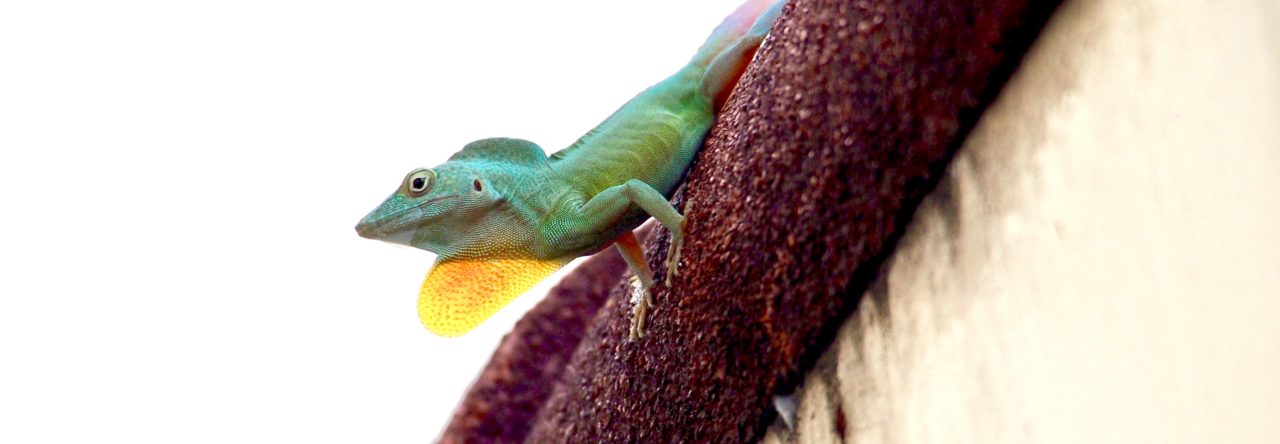All of us who study anoles in the Caribbean share a PR problem: people think we’re partying on the beach all day long. Now, it’s true that that’s exactly what some of my colleagues do (you know who you are, but I’m not naming names), but there’s a problem with this approach: anoles don’t live on the beach! And for that reason, anole researchers generally do not either, at least not during working hours.
As we all know, anoles are characterized by the possession of two characteristics, an extensible throat fan and expanded subdigital toepads. But there are exceptions. The Cuban A. vermiculatus and A. bartschi (two of the finest anoles you’ll ever come across) have no dewlap whatsoever. And one species, A. onca, entirely lacks toepads, not even a hint of subdigital lamellae.
Where am I going with this, you might wonder? The answer is simple. Where do you think A. onca lives? On the beach! Anolis onca is the only beach-dwelling anole, or so it’s said. And for that reason, our South American Little Known Anole Tour (SALKAT) moved from the chilly Andes of Colombia to the smoking hot sealevel of Maracaibo, Venezuela to see what’s up with this species.
 A few notes about Venezuela. Well, one mostly. It’s incredibly expensive. Who would pay $10 for a box of Froot Loops? Not even me. Or $9 for a can of Pringles? Ahem, well, it had been a good day. Rental cars cost more than $200/day, if you can find one (when we tried to get one at the Caracas Airport, the six rental car booths had, between them, two cars available). And hotel rooms are exorbitantly priced and also in scarce supply. We were told that the reason for that is that they were full of Cuban workers, sent over by the Castros to help their socialist brothers-in-arms. And, to be honest, the people we encountered–in the airport, at the hotel, etc.–often weren’t the friendliest.
A few notes about Venezuela. Well, one mostly. It’s incredibly expensive. Who would pay $10 for a box of Froot Loops? Not even me. Or $9 for a can of Pringles? Ahem, well, it had been a good day. Rental cars cost more than $200/day, if you can find one (when we tried to get one at the Caracas Airport, the six rental car booths had, between them, two cars available). And hotel rooms are exorbitantly priced and also in scarce supply. We were told that the reason for that is that they were full of Cuban workers, sent over by the Castros to help their socialist brothers-in-arms. And, to be honest, the people we encountered–in the airport, at the hotel, etc.–often weren’t the friendliest.
One thing was cheap, though, gasoline. They practically give it away. At one point, we only had 1/4 tank of gas, so stopped at a service station. I went in and bought a can of soda for $2.50, then paid the bill for the gas, which came to $0.60.
Any way, back to A. onca.















